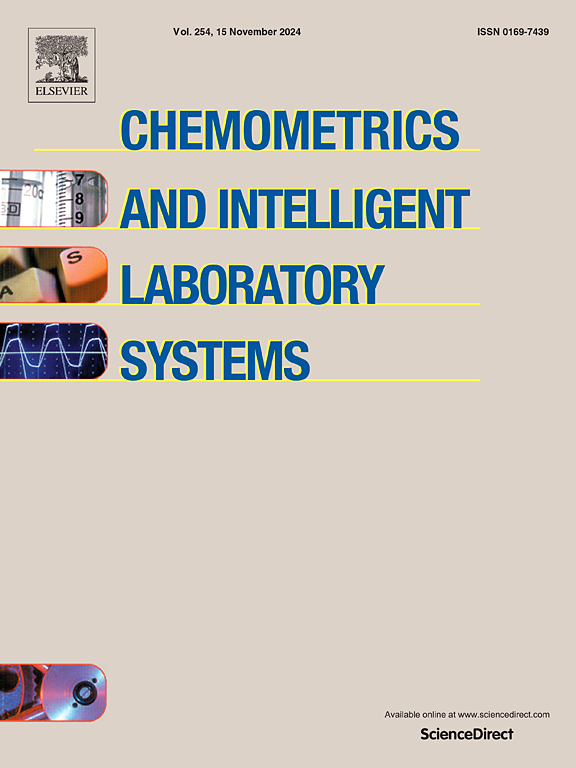Automatic spectral fitting for LIBS and Raman spectra by boosted deconvolution method
IF 3.7
2区 化学
Q2 AUTOMATION & CONTROL SYSTEMS
Chemometrics and Intelligent Laboratory Systems
Pub Date : 2025-01-25
DOI:10.1016/j.chemolab.2025.105334
引用次数: 0
Abstract
This study introduces a spectral analysis method known as Boosted Deconvolution Fitting (BDF) to process spectroscopic data. The BDF method enhances spectral resolution and precisely adjusts spectra by integrating boosted deconvolution for determining band profile parameters, and a multicomponent analysis technique for minor adjustments in band intensity. This technique seeks to address the shortcomings of conventional methods like the Levenberg-Marquardt algorithm (LMA), especially in terms of improving spectral resolution, accurately determining parameters of overlapping bands, and reducing sensitivity to initial conditions. The efficacy of the BDF method is affected by various factors, including the chosen band profile type (Gaussian or Lorentzian), the signal-to-noise ratio (SNR) of the dataset, and the separation and relative intensities of the spectral bands.
用增强反褶积法自动拟合LIBS和Raman光谱
本文介绍了一种称为增强反褶积拟合(boosting Deconvolution Fitting, BDF)的光谱分析方法来处理光谱数据。BDF方法提高了光谱分辨率,并通过积分增强反褶积来精确调整光谱,以确定波段剖面参数,并采用多分量分析技术进行波段强度的微小调整。该技术旨在解决Levenberg-Marquardt算法(LMA)等传统方法的缺点,特别是在提高光谱分辨率,准确确定重叠带参数以及降低对初始条件的灵敏度方面。BDF方法的有效性受到多种因素的影响,包括所选择的波段轮廓类型(高斯或洛伦兹)、数据集的信噪比(SNR)以及光谱波段的分离和相对强度。
本文章由计算机程序翻译,如有差异,请以英文原文为准。
求助全文
约1分钟内获得全文
求助全文
来源期刊
CiteScore
7.50
自引率
7.70%
发文量
169
审稿时长
3.4 months
期刊介绍:
Chemometrics and Intelligent Laboratory Systems publishes original research papers, short communications, reviews, tutorials and Original Software Publications reporting on development of novel statistical, mathematical, or computer techniques in Chemistry and related disciplines.
Chemometrics is the chemical discipline that uses mathematical and statistical methods to design or select optimal procedures and experiments, and to provide maximum chemical information by analysing chemical data.
The journal deals with the following topics:
1) Development of new statistical, mathematical and chemometrical methods for Chemistry and related fields (Environmental Chemistry, Biochemistry, Toxicology, System Biology, -Omics, etc.)
2) Novel applications of chemometrics to all branches of Chemistry and related fields (typical domains of interest are: process data analysis, experimental design, data mining, signal processing, supervised modelling, decision making, robust statistics, mixture analysis, multivariate calibration etc.) Routine applications of established chemometrical techniques will not be considered.
3) Development of new software that provides novel tools or truly advances the use of chemometrical methods.
4) Well characterized data sets to test performance for the new methods and software.
The journal complies with International Committee of Medical Journal Editors'' Uniform requirements for manuscripts.

 求助内容:
求助内容: 应助结果提醒方式:
应助结果提醒方式:


